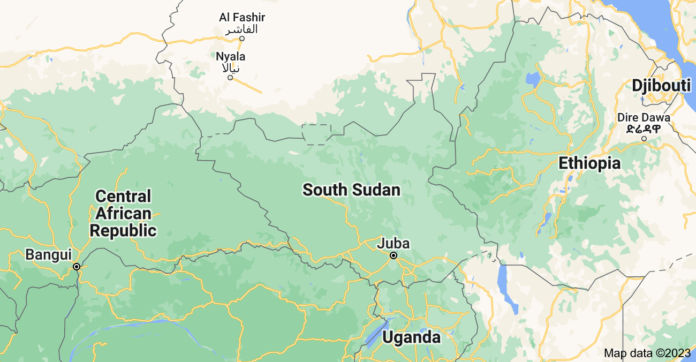March 23, 2023, Editorial Opinion by Chuol Jany, South Sudan is a country with sixty-four tribes and none of them ever declared war against another since liberation.
Citizens live peacefully in all regions regardless of their origins. They resisted both foreign colonial power and Arab domination.
This opinion is to dispute the misleading information from the top leader of the ruling party who said quote,
“Riek Machar declared war against Dinka. Any Nuer who declared war against Dinka, Nuer will follow him, you need to know this. Even me Peter Lam if I declared Nuer will come out from UNMISS to follow me.”
This is entirely tenuous with no scientific or theological basis. The Nuer and Dinka are not enemies historically.
They married side by side, and share more common norms, and resources like water and grazing land than any ethnic group in this country. I spent many years in Tonj North, Warrap State (Makuach, Wunchei, and Apuk to mention a few but I was never discriminated against.
The fact remains that Dinka and Nuer are only rivals over grazing land and water for their cattle in the past. These clashes have usually taken place in a local context without causing massive amounts of fatalities.
The cattle raiding and conflicts over pastures and wells between the Dinka and Nuer have a long history but it never affected relations between both communities which have been marked by intermarriage and cooperation.
Unverified cultural history indicates that Nuer are children of Nyatuoch Deng (Toch is an area surrounded by rivers) and Dinka are children of Nyaruop Deng (Ruop is an area surrounded by forest).
Traditionally, cattle raids are a livelihood-sustaining practice, which allows the restocking of herds after droughts.
The culture of cattle raiding among the youth is not only among Nuer and Dinka alone but it’s common among pastoralist communities countrywide and internationally like the recent case of Taposa in Eastern Equatoria and Turkana in Kenya.
According to the history of origin, the Nuer and Dinka peoples belong to the Nilotic group of the Nilo-Saharan language family and inhabit the savanna and sudd region of the upper Nile.
Briefly, if you see the map of Upper Nile, Unity, and Jonglei states are all diverse communities, speaking their national languages without identifying as Nuer, Dinka, or Shilluk for centuries.
The University of Wisconsin-Madison published a journal about Nuer and Dinka’s Patterns of Migration and Settlement. The Dinka (Jieng) and Nuer (Nei ti Naath) are the two largest ethnic groups in South Sudan.
Their traditional homelands extend across the savannas and marshes of the greater Bahr el-Ghazal and Upper Nile regions and are transected by numerous tributaries flowing into the White Nile. Dinka groups inhabit the vast arc of land running north, west, and south of the central Nile basin.
Nuer groups occupy the central basin itself, extending eastwards along the Sobat and Baro rivers all the way into southwestern Ethiopia.
Both ethnic groups are closely related, having emerged from a common proto-Nuer/Dinka cultural formation some five hundred years ago. Both speak closely related Nilotic languages, though these are no longer mutually comprehensible.
They have also intermarried heavily over the years, and often migrate through and/or reside in one another’s home territories.
Finally, both groups share an extremely broad sense of kinship and related exogamic norms, which can extend back in time to encompass as many as ten to twelve generations of descendants on the father’s side and six to eight generations on the mother’s side.
However, the comment of Mr. Peter Lam Both, the SPLM Secretary is proved wrong. It’s a direct and intentional promotion of hatred between the sisterly communities for his political gain.
Being from the two communities makes one feel like a victim of such a statement. In some civilized nations, tribalization is not unique but something politicians could use to gain ground.
Countries like Turkey, the United States Venezuela, Russia, and the United Kingdom think beyond tribal borders.
The revitalized peace agreement that legitimized the current government clearly stated the need to reconcile the communities divided by war.
It sets out internationally recognized standards on the rights of victims of mass atrocity crimes in the context of establishing a Truth Commission.
Public consultations on the establishment of the CTRH took place in South Sudan in April-June 2022, including consultations with some survivor groups.
The provision in Chapter Five of the agreement on the establishment of Truth, Reconciliation, and Healing shouldn’t be jeopardized.
In the public and private sectors, Dinka and Nuer are working together without discrimination against other South Sudanese and nobody has ever been denied his or her right on the basis of ethnicity.
But as a journalist, I termed this as “misinformation,” the young people who don’t know the history of tribes in South Sudan can take advantage of it and cause unnecessary damage.
The war in 2013 was instigated by a misinformed public including security organs that led to a loss of lives and properties, destruction, and hatred built in the hearts of individuals or families.
A party dispute turned into a national man-made disaster and was hardly contained by politicians because each is telling his or her version of the story to mobilize supporters to fight the war of their own interest.
This comment of the SPLM Secretary should be disregarded and the leader must be held accountable.
South Sudan must embrace peace and unity to ensure this country can flourish and our children enjoy the dividends of their fathers.
Citizens can’t afford to believe politicians who are against the will of the South Sudanese.
This view does not represent the institution I work, it’s my own opinion as a concerned citizen.

